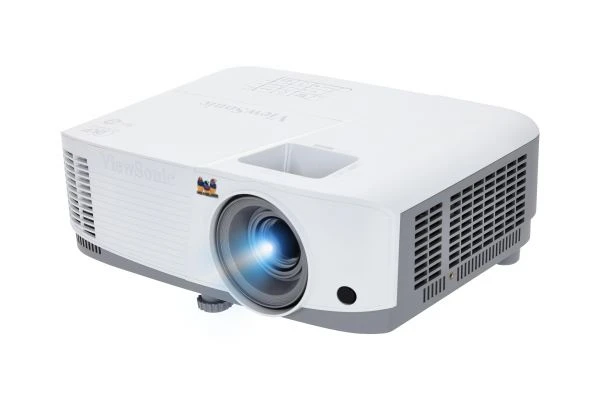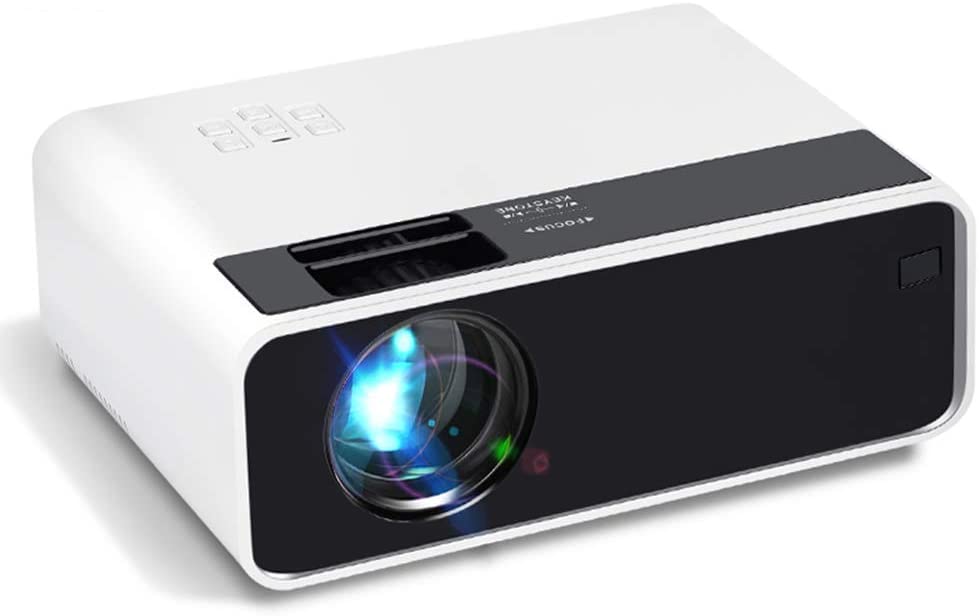Comprehensive Guide: Understanding the Intricacies of a Multimedia Projector
Introduction
Welcome to our comprehensive guide that explores the fascinating world of multimedia projectors. This article is designed to answer all your queries, from what a multimedia projector is, how it operates, its evolution over time, its various applications, to considerations during purchase. By the end of this guide, you’ll have a thorough understanding of multimedia projectors and you’ll be equipped to make informed decisions on their usage and purchase.
What is a Multimedia Projector?
A multimedia projector is a high-tech versatile equipment designed to project various forms of media onto a larger screen, facilitating viewing by a larger audience. Below are pertinent points that breakdown what essentially defines a multimedia projector:
• Purpose: It's used to enlarge and display visuals and multimedia from a source, generally a computer or media player, onto a screen – big enough for convenient viewing by an audience. It's an illustrative approach to information delivery, achieving clear, dynamic, and compelling presentations.
• Core Components: A typical multimedia projector incorporates three primary components: a light source, an optics system, and a cooling fan.
• Functionality: The projector's light source illuminates an LCD panel displaying the desired image. The optics system magnifies the image, successfully projecting it onto a screen. The cooling fan continuously cools the system to prevent overheating, ensuring smooth operation.
• Versatility: Multimedia projectors are prevalent across multiple sectors, including education, business, cinema, and home entertainment. The device's ability to project diverse multimedia formats makes it a powerful communication tool in these arenas.
In summary, a multimedia projector is a dynamic device, providing high-quality projections to enhance visibility and comprehension effectively, regardless of the application scenario.
How Does a Multimedia Projector Function?
The functioning of a multimedia projector, while complex, can be broken down into straightforward steps. The underlining process includes a play of light, optics, and cooling systems, coming together to project visuals in a larger-than-life format. Here's a simplified overview:
- Light Source: The light source is the heart of the projector. The quality and intensity of this light affect the output on the screen. Traditional projectors used halogen bulbs, but newer designs incorporate LED or Laser sources for more luminosity.
- LCD Panel: The role of the LCD panel is fundamental in creating the image. The light passes through this panel, where the image is formed. This process is where advanced technologies, like Digital Light Processing (DLP) or Laser, come into play in high-end models for sharper and more vibrant images.
- Optics System: Once the image is formed, the Optics System enlarges it. Through a combination of mirrors and lenses, the small-sized image is translated onto a larger screen without any distortion or loss of image quality.
- Cooling Mechanism: This system ensures the equipment doesn't heat up during operation, enhancing the life of the device. Most projectors use fans, but some high-end models incorporate liquid cooling systems, ensuring the continuous and smooth running of the device.
Understanding these systems allows potential buyers and users to appreciate the intricately coordinated operations behind the scenes that make presentations, movie nights, or business pitches so visually mesmerizing. It's important to remember that the functionality of each model can differ - often depending on the price point and brand reputation.
How Has the Multimedia Projector Evolved Over Time?
The multimedia projectors that we know today have undergone significant transformations to become the sophisticated and multi-functional devices they are now. This section delves into the key trends that have shaped the evolution of multimedia projectors.

- Phase 1: Early Analog Projectors:
Initial models were large, bulky, and with limited functionality. They primarily projected static images or simple text documents onto a screen.
- Phase 2: Advent of Digital Projectors:
The most prominent change came with the arrival of digital projection technology. Digital projectors provided clearer, sharper projections with diverse multimedia capabilities. They also offered more connectivity options by including VGA, S-Video and composite video.
- Phase 3: Incorporating LCD & DLP Technology:
With advancements in technology, LCD (Liquid Crystal Display) and DLP (Digital Light Processing) projectors came into the picture. These were compact, portable and offered better quality images.
- LCD Projectors: Utilize liquid crystal displays to project images.
- DLP Projectors: Employ a chip made up of microscopic mirrors and a spinning color wheel to project images.
- Phase 4: The Era of Laser Projectors:
The latest addition to the projector technology are the laser projectors. Known for brilliance in colors and brightness, they are more energy-efficient.
- Phase 5: Transition to Smart, IoT-enabled Projectors:
The current focus is on wireless, portable, and IoT-enabled projectors. They function seamlessly with smart devices, offering remote access and hands-free control.
In conclusion, the evolvement from simple analog projectors to the modern, smart, and multi-functional digital projectors has been a monumental journey full of innovations and advancements.
What Are the Various Uses of Multimedia Projectors?
Multimedia projectors are technological powerhouses that step in as effective mediums for displaying information across larger audiences. Their dynamic nature allows for a plethora of applications in diverse fields, from educational sectors to business conglomerates, from home entertainment to public events, and far beyond.
- Educational Sector: Projectors have become an integral part of modern classrooms. They revolutionize teaching methodologies, from simple lectures to interactive learning. Teachers employ multimedia projectors to demonstrate complex concepts through visuals, encouraging a comprehensive understanding among students.
- Business Environment: The corporate world benefits significantly from multimedia projectors. They play a key role in presentation delivery, team collaborations, and training sessions. Statistically speaking, 91% of business professionals believe that interactive visual displays can lead to more effective meetings, as per a study by Barco Clickshare.

- Residential Application: Home entertainment has seen a surge in projector use. Families use projectors for movie nights, transforming any room into a home theatre. Gaming enthusiasts also prefer projectors for an immerse gaming experience.
- Public Sector and Outdoor Events: Art exhibitions, museums, outdoor movie nights, and theatre performances make the most out of projector technology. According to a report by Grand View Research, the projector market is expected to reach $18.8 billion by 2025 due to its increasing usage in outdoor events.
- Interactive Displays: Many advanced projectors offer interactive features that allow for real-time engagement. They can be used in interactive workshops, fun educational activities, and dynamic business presentations.
Therefore, the ingeniously versatile nature of projectors is proliferating their use across diverse segments. While capturing intricate details through various multimedia content, projectors ensure information is conveyed in the most interactive, engaging, and comprehensive way possible. In a nutshell, there's much more to a projector than just projecting - it's about transforming conventional presentations into extraordinarily engaging experiences.
What Should You Consider When Purchasing a Multimedia Projector?
When it comes to investing in a multimedia projector, there are several critical factors required to ensure you make a well-informed purchase. Here is a comprehensive list of factors that you need to consider:
- Purpose of Use: The first and foremost factor to consider is the primary reason for your purchase. This helps determine what type of projector is perfect for you. A high-resolution projector might be best suited for business presentations, while a high contrast ratio would enhance the image quality, serving as an ideal home theater system.
- Picture Quality: The three main qualities to consider here are:
- Resolution - Higher the resolution, sharper the image.
- Brightness - Measured in lumens, brightness needs to be considered based on your environment. For example, well-lit rooms require higher lumens.
- Contrast Ratio - Defines the difference between the darkest and brightest parts of the picture. Anywhere from 1,500:1 to 2,000:1 is generally considered acceptable for home theaters.
- Technologies Utilized: There are several types of projector technologies available such as DLP (Digital Light Processing), LCD (Liquid Crystal Display), and Laser. Each comes with its own set of pros and cons, hence understanding these technologies helps pick the right one.
- Connectivity Options: In today's digitally connected world, it's critical that your projector supports diverse connectivity options like HDMI, VGA, USB. Moreover, projectors with wireless capabilities are an excellent choice if your needs align with mobility and ease of use.
Considering such factors offers you a greater edge in realizing the full potential of a multimedia projector, ensuring it suits your specific needs and preferences.
Conclusion
In a rapidly evolving technological landscape, multimedia projectors have turned into indispensable tools. They add value across various verticals by transforming complex information into digestible visual formats. With a deeper understanding of these crucial devices, individuals and organizations can optimize their communication and engagement efforts effectively and efficiently.
Related FAQs about what is multimedia projector
What are the main differences between desktop and portable projectors?
The primary difference lies in their size and purpose. Desktop projectors are larger, usually meant for permanent installation in a single location like classrooms or conference rooms. Conversely, portable projectors are compact, lightweight, and designed for mobility. They're ideal for professionals who need to present at various locations.
How do I enhance the efficiency of my multimedia projector?
To enhance the efficiency of your multimedia projector, ensure regular cleaning of the lens and filters, use it in a dust-free environment, and in a room with controlled light. Also, remember to switch off the projector when not in use to extend the lifespan of the lamp.
What are the latest developments in projector technology?
The latest development in projector technology sees a move towards IoT-enabled, wireless, and miniaturized projectors. Laser technology is also increasingly being used due to its superior brightness and energy efficiency. Additionally, smart features like voice control, companion smartphone apps, and built-in streaming services are being incorporated.


